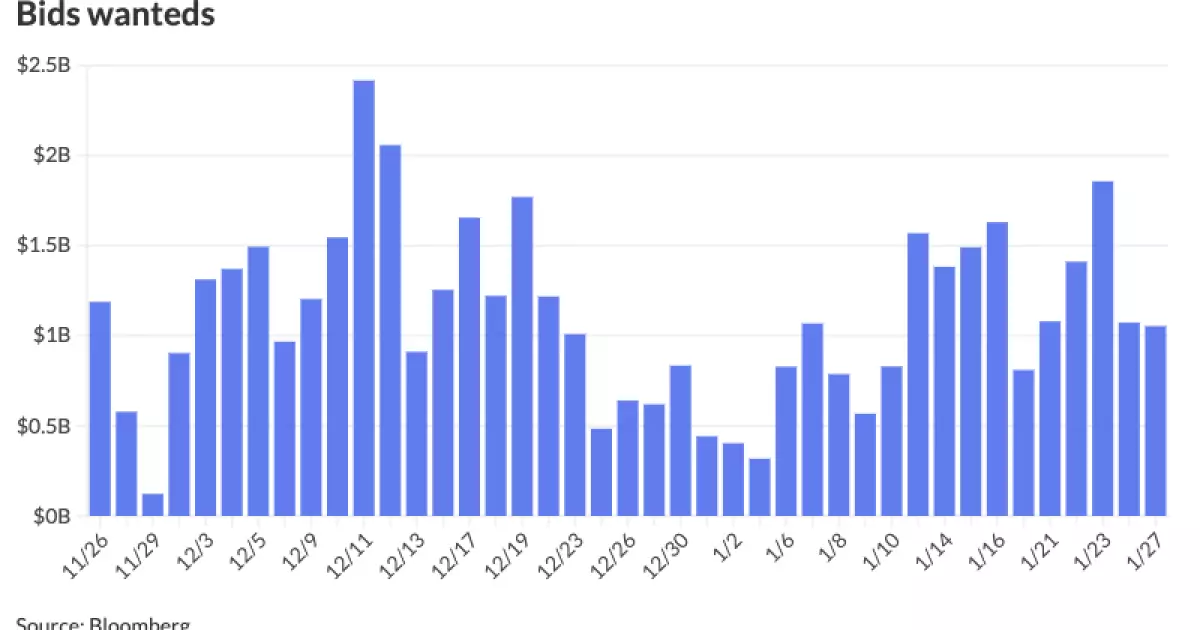The municipal bond market has showcased a remarkable resilience as it navigates through the complexities of economic policy shifts and market fluctuations. With the Federal Open Market Committee (FOMC) meeting on the horizon, investors remain cautiously optimistic as the U.S. Treasury yields experience minimal volatility. On a day where equities displayed upward movement, municipal bonds maintained their steadiness, which can often signify confidence in their long-term value—despite external uncertainties.
BlackRock analysts highlight the potential for heightened market fluctuations this year, fueled by anticipated policy changes from the Trump administration. The expectation of deregulation has been cited as a potential stimulus for economic growth. However, the impending introduction of new tariffs could pose a risk by marginally dampening the economy and driving inflation rates higher. BlackRock posits that while these tariff threats will primarily serve as bargaining tools rather than rigid policies, their implications could still be significant within the markets.
Matt Fabian, a partner at Municipal Market Analytics, predicts that the likelihood of another interest rate cut during the upcoming FOMC meeting remains low. This expectation aligns with recent data indicating elevated inflation levels and signs of consistent economic growth. According to BlackRock, the Fed’s approach to rate cuts is likely to taper off as the year progresses, potentially ceasing entirely by mid-year. The Federal Reserve’s mission to attain a 2% inflation target, despite persistent economic vitality, suggests that ongoing substantial easing measures may not be warranted for the foreseeable future.
Market strategists anticipate that the yield curve for U.S. Treasuries will likely steepen, with short-term rates declining while long-term rates stabilize or rise slightly due to fiscal deficit concerns and an uptick in term premiums. Retail investors continue to show strong demand for municipal bonds through separately managed accounts, indicating an active interest in the market despite recent fluctuations in trading volumes.
The prevailing demand for municipal bonds is expected to remain robust, as investors are drawn to attractive yields and stable credit dynamics. Despite experiencing substantial outflows from mutual funds over the past two years, the municipal segment still benefits from strong retail interest. A considerable amount of cash is currently sitting on the sidelines as investors await more favorable conditions, and potential future Fed rate cuts could attract further investment inflows.
However, the outlook for demand is not without its challenges. Changes in tax policy, such as adjustments to the state and local tax deduction cap or movements to reduce the corporate tax rate, have the potential to disrupt municipal demand forecasts. As municipalities work to navigate these changing fiscal landscapes, they must also consider how these policy shifts affect investor behavior.
Recent trading activity within the municipal market has illustrated a preference for long-term stability alongside an active primary market landscape. Notable recent issuances provide insights into current trends and investor appetite. For instance, the Oklahoma Turnpike Authority successfully priced a substantial $1.274 billion of senior revenue bonds—the pricing details illustrate a proactive engagement with investors seeking secure financial vehicles.
The Columbus Regional Airport Authority and the Regents of the University of California are also noteworthy players in the ongoing market developments, indicating the broad array of entities taking advantage of favorable borrowing conditions. These issuances reflect a confidence among municipal borrowers to capitalize on historically low interest rates, thus enabling them to fund essential projects while managing future operational costs effectively.
In the competitive market, several jurisdictions are making significant moves, including Mecklenburg County, which has sold limited obligation bonds. Such sales highlight the continued competitive environment for municipal bonds, driven by the need for essential funding coupled with an investor base eager to invest at favorable yields.
Looking forward, stakeholders in the municipal bond market must remain vigilant in adapting to evolving economic policies and market conditions. The year ahead holds potential for both opportunities and challenges, as various factors including tax reforms and Fed policies shape demand and pricing strategies. Ultimately, while the current landscape presents several uncertainties, the steadfastness of municipal bonds amidst market fluctuations may continue to appeal to risk-averse investors seeking incremental income through stable returns. As we move further into the year, ongoing engagement with market dynamics will be essential in identifying shifts that could have profound implications for municipal finance and investment strategy.


Leave a Reply